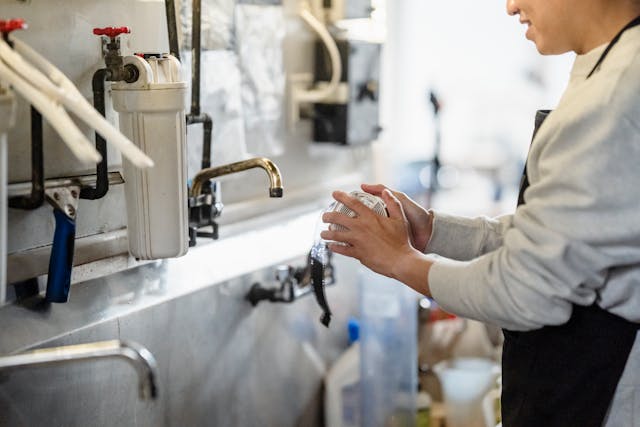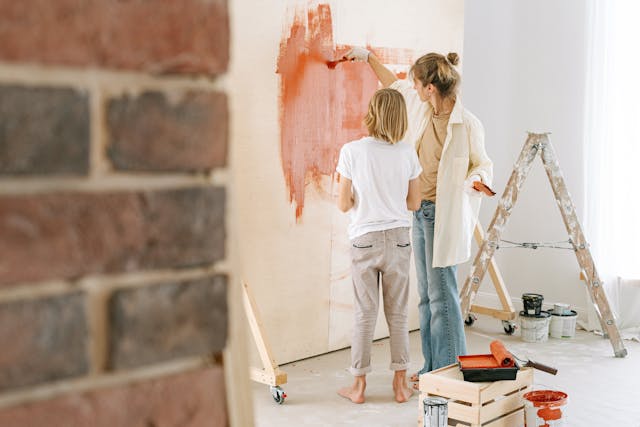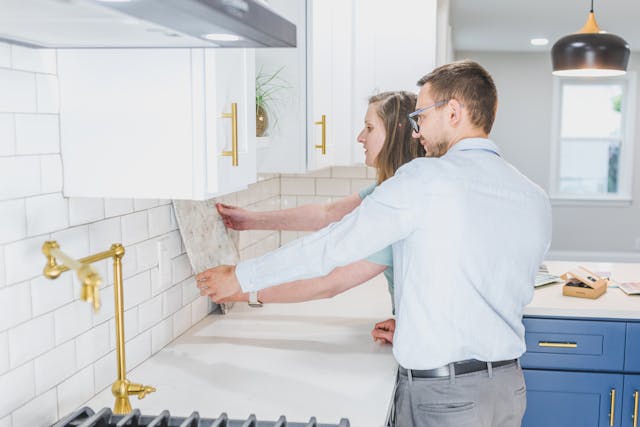That drip, drip, drip from a leaky faucet can drive you crazy! Or worse, a toilet that won’t stop running, or a clogged tub that refuses to drain. Plumbing problems always seem to strike at the worst possible time, and the thought of calling a plumber and waiting for an appointment (and then paying the bill!) is enough to make anyone feel stressed. But guess what? Many common plumbing issues are actually fixable without calling in the pros, saving you time and a whole lot of money.

Section 1: Plumbing Tools for Beginners
Before jumping into your first repair, you’ll need a few basic tools. No need to go overboard, as a starter kit can handle most simple fixes:
- Essential Toolkit: Invest in an adjustable wrench, slip-joint pliers, a basic plunger, a basin wrench (for those hard-to-reach nuts under the sink), and a small tubing cutter for potential supply line fixes.
- Safety Gear: Always wear safety glasses when working on plumbing, especially when snaking out drains. Work gloves protect your hands, especially in tight spaces.
- Helpful Extras: A small flashlight will be your best friend when peering into dark cabinets. An old bucket and towels are crucial for containing water you’ll inevitably spill when disconnecting those leaky pipes!
Section 2: Leaky Faucet Frustration No More!
That persistent dripping faucet might be a minor annoyance, but it’s also a waste of water (and, potentially, your sanity!). Here’s how to fix the most common culprits:
- Identifying the Culprit: Usually, a leaky faucet is caused by a worn-out washer, O-ring, or a corroded valve seat. The first step is turning off the water supply valves under your sink, then disassembling the faucet.
- Step-by-Step Fix: Faucet designs vary, but start with the most common single-handle type. There are tons of online videos showing the exact process of disassembly and how to replace worn parts, which are readily available at hardware stores.
- Resources: Search for your specific faucet brand and model on YouTube. You’ll likely find a step-by-step tutorial perfect for newbie DIYers.
Section 3: Clogged Drain? Clear it Yourself!
A clogged sink or shower drain is incredibly inconvenient. Before reaching for the harsh chemicals, try these techniques:
- Methods of Attack: Start with the classic plunger. Good old-fashioned agitation can often clear simple clogs. If that fails, a manual drain snake is your next line of defense. These flexible tools can reach further down the drain to break up or dislodge clogs.
- Easy Access: Bathroom sinks have a P-trap, that curved piece of pipe under the sink. This is an easy clog-clearing point: unscrew the P-trap, clean out any buildup, and put it back together. Gross, but simple!
- When to Stop: If you’ve snaked until you hit a hard stop, it might be a blockage further down the line, requiring professional assistance. Harsh chemical drain cleaners can sometimes work, but they can also damage older pipes.
Absolutely! Here are the final sections of your DIY plumbing fix-it guide:
Section 4: Running Toilet Repairs
A constantly running toilet is both annoying and a surprising water-waster. It’s usually caused by one of a few simple problems:
- Common Problems: Most often, it’s a worn-out flapper (the rubber piece at the bottom of the tank), a fill valve that doesn’t completely shut off the water flow, or a misadjusted float that tells the system when the tank is full.
- Replacing Parts: Each of these components is readily available at hardware stores and simple to replace. The process involves draining the toilet tank, removing the old part, and carefully installing the new one. Again, online tutorials abound for specific toilet models.
- Water-Saving Opportunity: Consider replacing outdated parts with water-efficient ones. Newer flappers often have adjustable settings, and modern fill valves are designed to conserve water, saving you money on your water bill.
Section 5: Know Your Limits – When to Call in the Pros
While it’s empowering to tackle those simple plumbing fixes, it’s equally important to know when it’s time for professional help.
- Major Leaks: If you have a burst pipe spraying water everywhere, don’t try to DIY it! Turn off your main water shutoff valve immediately and call a plumber. Water damage can be extensive and expensive, so fast action is key.
- Complex Repairs: Replacing water heaters, re-running supply pipes, or anything requiring permits or inspections is usually best left to a licensed plumber.
- Building Codes: Local codes might dictate what you’re allowed to do yourself plumbing-wise. A quick call to your local building department can clarify what projects require permits for your safety and to prevent issues down the line.
Conclusion
See? You’re more capable than you thought when it comes to basic plumbing fixes! Addressing those leaky faucets, clogged drains, and running toilets yourself is empowering and saves you a ton of money. Remember, a little preventative maintenance goes a long way. Check under your sinks from time to time for small leaks, fix that dripping faucet right away, and don’t ignore a toilet that keeps running. These simple actions can save you from major headaches later, and it feels good to know your home is in good hands – your own!


